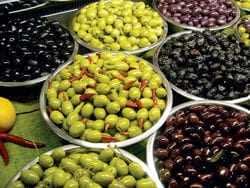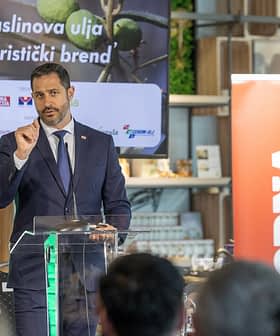By Sophia Markoulakis
Olive Oil Times Contributor | Reporting from San Francisco
The fall months that coincide with Sonoma Valley’s wine harvest bring tourists and wine lovers from all over the world to visit the area. But after the flood of tourists have retreated to their routines and the oenophiles have returned to their wine cellars, a relatively new type of visitor is making a trip to the area during the winter and exploring its burgeoning olive oil industry.
Sonoma County has more olive oil producers than any other county in the state of California; and this “off-season” harvest creates the perfect opportunity to generate public interest and stimulate business in the Sonoma Valley during this traditionally sleepy time of year. The Sonoma Valley Olive Season brings together olive oil producers, restaurants, and local olive and olive oil authorities to host special events, tastings, and lectures for locals and visitors during the winter months from December through February every year.
traditionally sleepy time of year. The Sonoma Valley Olive Season brings together olive oil producers, restaurants, and local olive and olive oil authorities to host special events, tastings, and lectures for locals and visitors during the winter months from December through February every year.
Wendy Peterson, executive director of the Sonoma Valley Visitors Bureau, says, “Our goal was to develop a winter promotion that was authentic. Olives are very much a part of Sonoma Valley.” Peterson says growing olives in Sonoma Valley is possible for homeowners and non-food and wine businesses. “Even an antique business such as Sonoma County Antiques has a small olive grove in front of their store and hope for their first official harvest next year,” says Peterson. With The Olive Press literally down the road, growing and pressing one’s own olive oil is not only possible but also convenient.
 Several Sonoma Valley wineries are designating portions of their properties to growing olives for olive oil. As natural companion plants, grape vines and olive trees have opposite seasons. Some wineries such as Benziger Family Winery planted olive trees throughout their vineyard to offer biodiversity to their land.
Several Sonoma Valley wineries are designating portions of their properties to growing olives for olive oil. As natural companion plants, grape vines and olive trees have opposite seasons. Some wineries such as Benziger Family Winery planted olive trees throughout their vineyard to offer biodiversity to their land.
Utilizing facilities, in-house labor and tasting room staff during the off-season make economic sense to wineries that keep their business and tasting rooms operational year-round. Wineries such as B.R. Cohn and Benziger might incorporate the cost of producing olive oil as part of their business model, but don’t necessarily expect a profit from olive oil. “In my opinion, the motivation for most wineries is that it’s an added expansion of their agricultural expertise,” says Peterson.
Besides olive oil tasting at several participating wineries including B.R. Cohn and Jacuzzi Family Vineyards, which shares its facilities with The Olive Press, and olive curing workshops, there’s a grand multi-course feast that takes place at Ramekins Culinary School and Event Center. The Feast of the Olive Dinner brings together olive and olive oil lovers with local chefs and olive oil producers. This year’s line up includes chefs from Estate, El Dorado Kitchen, and The Lodge.
The following recipe is from a past Feast of the Olive Dinner, courtesy of Mary Karlin, staff chef-instructor at Ramekins Culinary School in Sonoma.
To view upcoming Sonoma Olive Festival events, visit Sonoma County Olive Festival.
Green Olive Tuna and Artichoke Mousse on Chevre Crostini
Makes about 4 cups8 ounces green olives (in brine), rinsed, pitted and minced
1- 6 oz can of imported Italian tuna, packed in olive oil, chunked
8 ounces non-seasoned artichoke hearts, drained and coarsely chopped
1 tablespoon salted capers, rinsed and dried
4 cloves roasted garlic, minced
2 tablespoons Italian parsley leaves, minced
1/2 cup or so fruity olive oil
2 tablespoons lemon zest
juice of one-half lemon
kosher salt to taste
finely ground white pepper
1/4 cup finely chopped chives for garnishIn a small bowl, toss together the olives, chunks of tuna and the oil, artichoke, capers and garlic. Add parsley, 1/4 of the olive oil, the lemon zest and lemon juice. Mix together. Place mixture in a the bowl of a food processor and pulse to combine. Then process until smooth to create the desired mousse consistency. Add remainder of olive oil (if needed) and kosher salt and white pepper to taste. Set aside for at least 30 minutes for the flavors to come together.
Dollop or pipe on Fench baguette crostini spread with chevre. Sprinkle with chopped chives as garnish. Mousse may be stored in a refrigerator for up to a week.








